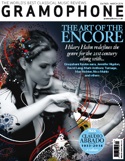Texte paru dans: / Appeared in:
*

GRAMOPHONE (03 /2014)
Pour s'abonner /
Subscription information
Ricercar
RIC338

Code-barres / Barcode : 5400439003385
Reviewer: Julie
Anne Sadie
Following her
recordings of 18th-century French chamber music, the violinist Florence
Malgloire scrolled further back to Charpentier, who composed relatively few,
albeit extremely interesting, stand-alone instrumental works. The principal
instrumental work here is the tantalising Sonate à huit, a work that has been
slow to gain popularity, despite a fine recording by London Baroque as long ago
as 1986 (Harmonia Mundi, 5/87). To judge by the paper on which he copied the
parts, Charpentier composed the Sonate in the mid-1680s as a showpiece for four
solo players and accompanying instruments, and to impress a Paris audience of
connoisseurs, who would take delight in the various juxtapositions of current
French and Italian styles within it. Les Dominos do it proud, though I was sorry
to detect the pauses between some of the movements – something Charpentier
specifically warned against.
This disc has the feel of an
Advent concert because it includes both liturgical music and Noëls, brings
together three separate ensembles, and relies on a characterful organ (after Le
Picard) played by the talented Freddy Eichelberger, the attractions of a serpent
played by Patrick Wibart and the luxuriant acoustics of the Abbaye aux Dames at
Saintes. The evocation of the procession of the Holy Sacrament to the Altar of
Repose is quite realistic, with the two verses of plainchant interleaved with
the instrumental music (a rare treat to hear). The serpent quite rightly and
very effectively supports the baritones from the Namur Chamber Choir but
slightly weighs down the delicate chamber music textures. Of the Noëls, some are
performed in both simple vocal and imaginatively orchestrated instrumental
versions, and it is here that Eichelberger puts the organ through its paces (the
birdsong effects in tr 19 are especially intriguing). Malgloire takes a
well-deserved bow in ‘O nous dite Marie’ (tr 15). Definitely to be revisited
next Christmas, if not before.
Cliquez l'un ou l'autre
bouton pour découvrir bien d'autres critiques de CD
Click either button for many other reviews


